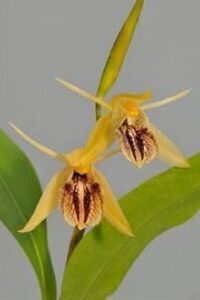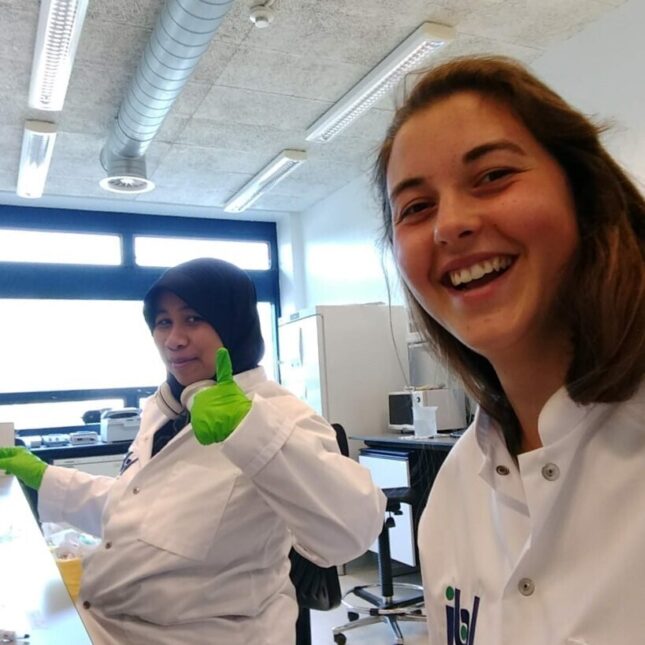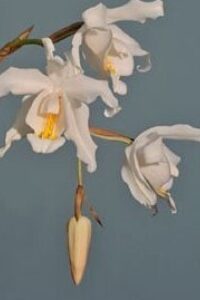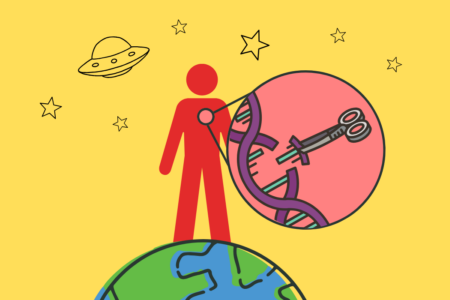Leiden Student Journal: Orchids as medicines
In this new series, 'Leiden Student Journal', LSM features a student whose research or internship has lead to a scientific publication.
Imagine: You are doing your bachelor internship and the results are so promising that they could be published? Esmée de Graaf has done just that! For her bachelor internship at the Hogeschool Leiden, she conducted research on medicinal orchids. Her results are described in Frontiers in Pharmacology.
Esmée is very interested in the medicinal effect of plants: “Various plant species have been used against various ailments for hundreds of years. Think of headaches and stomach aches, but also more specific symptoms. These can be caused by bacterial infections. In the fourth year of my studies, I contacted Professor Barbara Gravendeel for a research internship. Barbara is a botanist at the Naturalis Biodiversity Center and investigates the evolution and development of plants in an ecological context. When I was offered an internship on the medicinal effect of orchids, I was immediately sold!”

Traditional medicines
The orchids studied are native to Indonesia, the homeland of Esmee's supervisor, Dr. Richa Kusuma Wati. Delving deep into literature, the team found a large number of species that may have an antimicrobial effect. Esmée: “In books and journals we found various medicinal effects of a number of orchids. We used species for our research that were known for their use in traditional practices, whether scientifically proven or not. One prerequisite was that the species should have a complete binomial name so that we could use the data.”
Esmée made a phylogenetic family tree for a selection of candidates. This tree can then be used to determine how a group of organisms originated from another group. Therefore, she isolated and sequenced (reading the genetic code, ed.) DNA from plants from the Hortus Botanicus Leiden and the Bogor Botanic Gardens. “We then linked the medicinal effects of the orchids to this family tree, so that it became clear what clades (organisms that all descend from a certain common ancestor, plus that ancestor itself, ed.) are most likely to have medicinal properties. The expectation is that these traits are related to a smaller group of specific species, rather than spread across the entire orchid family.”

Cutting leaves from old collections
For the genetics research, the researchers used specimens from the herbarium of Naturalis Biodiversity Center and Herbarium Bogoriense. “Normally, you are not allowed to cut away tissue from type specimens, because these species have been used to describe new species. Fortunately, we were allowed to use small parts, even from a specimen collected 194 years ago! Interestingly, we also found new species in the collection. These have yet to be described in the future.”
The research group is convinced that research on herbarium material should be allowed more often. Esmée: "We showed how important these collections can be for identifying new species, but also for more applied techniques such as linking to medicinal properties."
Esmée discovered that the orchid leaves produce more antimicrobial substances than the so-called pseudobulbs. Esmée: “Pseudobulbs are used by orchids to store energy or as water reservoirs. In literature, we often read that pseudobulbs have a stronger effect than the leaves - we found the opposite. A possible explanation is that the active substances in the pseudobulbs are more diluted due to the relatively high amount of water compared to the leaves. It would be very interesting to isolate and further test the antimicrobials.”
In addition, the research team found that orchids outdoors displayed more antimicrobial activity than plants indoors. This could be caused by a reaction to UV exposure and herbivores.
Conservation
It is important to continue orchid research projects. Esmée: “Many tropical orchids are threatened with extinction due to illegal deforestation. It is vital that these species are extensively described, researched and cultivated in botanical gardens. The species we researched are grown in Bogor Botanical Gardens in Java. In this way we can ensure that when the species becomes extinct in the wild, we can still obtain a lot of relevant information.”

Nails and plant substances
Esmée is currently finishing her Master's in Biology at Leiden University with an internship at Fytagoras: “I am researching the effect of extracts from medicinal plants on onychomycosis, a fungal infection of the nail. For the treatment of onychomycosis, our goal is to make the best possible combination of a product that can penetrate the nail as well as kill the fungus.”
Many products are available on the cosmetic market, but the team does not expect many of them to penetrate the nail. “I am researching whether the extracts and natural products can penetrate the nail (among other things by testing whether they can cause the nail to swell), so that the product can reach the fungus under the nail. Then I check whether the products actually have strong antimicrobial effects against the fungi.”
Esmée has not lost interest in medicinal plants at all: “I find medicinal plants extremely interesting and I would like to develop myself further within this research field after my Master's. The current pharmaceutical industry is often based on chemicals with a specific mechanism of action, but many plant species have not yet been described or investigated for medicinal actions. I am convinced we should investigate this more.”
Literature:
Wati, R. K., Graaf, E. D., Bogarin, D., Heijungs, R., Vugt, R. V., Smets, E. F., & Gravendeel, B. (2020). Antimicrobial activity of necklace orchids is phylogenetically clustered and can be predicted with a biological response method. Frontiers in Pharmacology, 11, 2175.
https://www.frontiersin.org/articles/10.3389/fphar.2020.586345/full






0 Comments
Add a comment